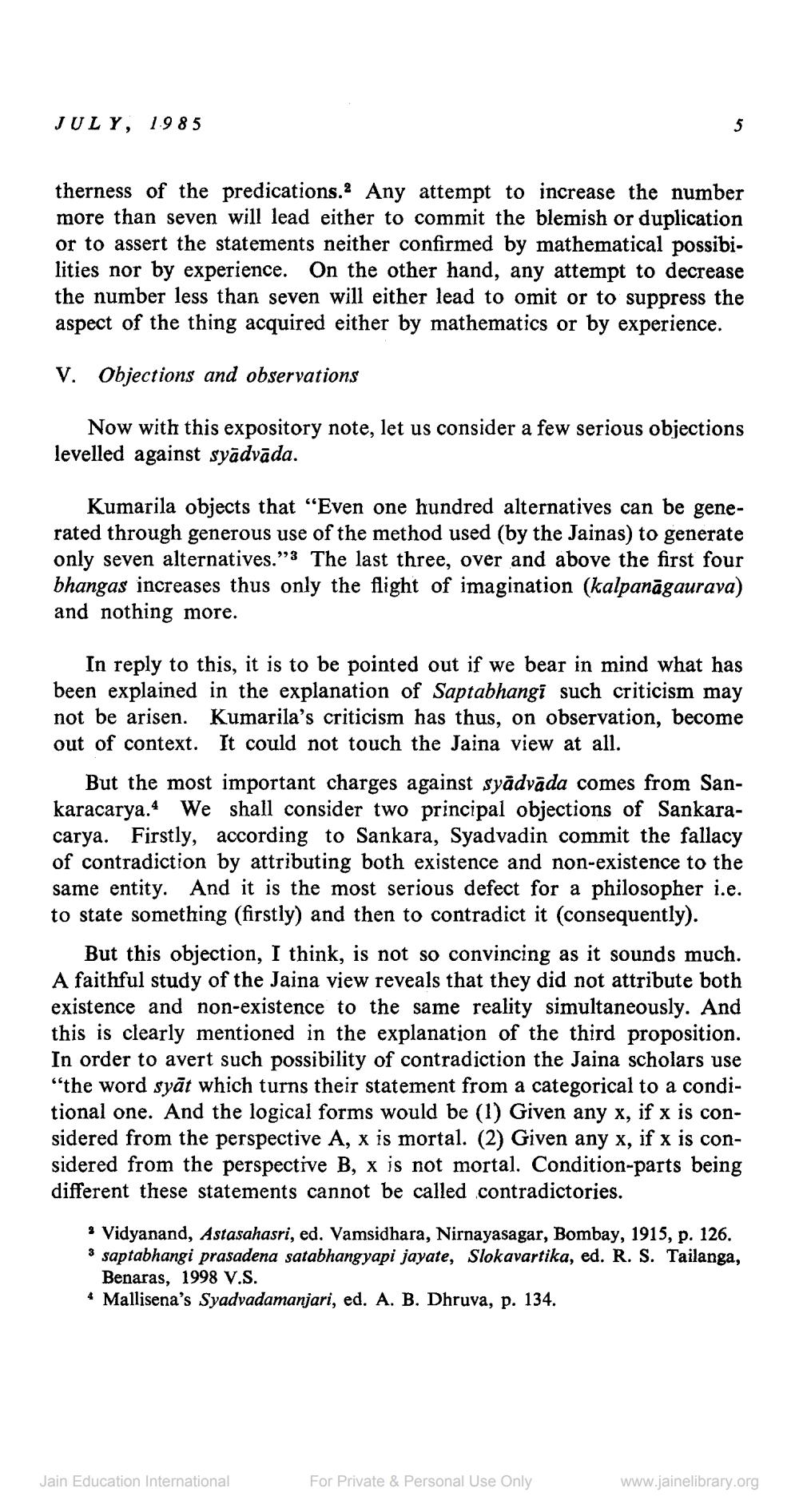________________
JULY, 1985
therness of the predications. Any attempt to increase the number more than seven will lead either to commit the blemish or duplication or to assert the statements neither confirmed by mathematical possibi. lities nor by experience. On the other hand, any attempt to decrease the number less than seven will either lead to omit or to suppress the aspect of the thing acquired either by mathematics or by experience.
V. Objections and observations
Now with this expository note, let us consider a few serious objections levelled against syādvāda.
Kumarila objects that “Even one hundred alternatives can be generated through generous use of the method used by the Jainas) to generate only seven alternatives."3 The last three, over and above the first four bhangas increases thus only the flight of imagination (kalpanāgaurava) and nothing more.
In reply to this, it is to be pointed out if we bear in mind what has been explained in the explanation of Saptabhangi such criticism may not be arisen. Kumarila's criticism has thus, on observation, become out of context. It could not touch the Jaina view at all.
But the most important charges against syādvāda comes from Sankaracarya. We shall consider two principal objections of Sankaracarya. Firstly, according to Sankara, Syadvadin commit the fallacy of contradiction by attributing both existence and non-existence to the same entity. And it is the most serious defect for a philosopher i.e. to state something (firstly) and then to contradict it (consequently).
But this objection, I think, is not so convincing as it sounds much. A faithful study of the Jaina view reveals that they did not attribute both existence and non-existence to the same reality simultaneously. And this is clearly mentioned in the explanation of the third proposition. In order to avert such possibility of contradiction the Jaina scholars use "the word syāt which turns their statement from a categorical to a conditional one. And the logical forms would be (1) Given any x, if x is considered from the perspective A, x is mortal. (2) Given any x, if x is considered from the perspective B, x is not mortal. Condition-parts being different these statements cannot be called contradictories.
Vidyanand, Astasahasri, ed. Vamsidhara, Nirnayasagar, Bombay, 1915, p. 126. 3 saptabhangi prasadena satabhangyapi jayate, Slokavartika, ed. R. S. Tailanga,
Benaras, 1998 V.S. 4 Mallisena's Syadvadamanjari, ed. A. B. Dhruva, p. 134.
Jain Education International
For Private & Personal Use Only
www.jainelibrary.org




